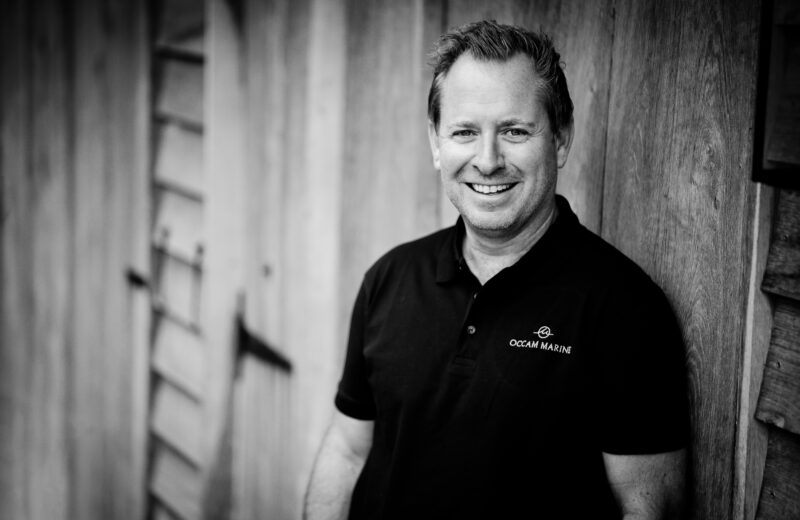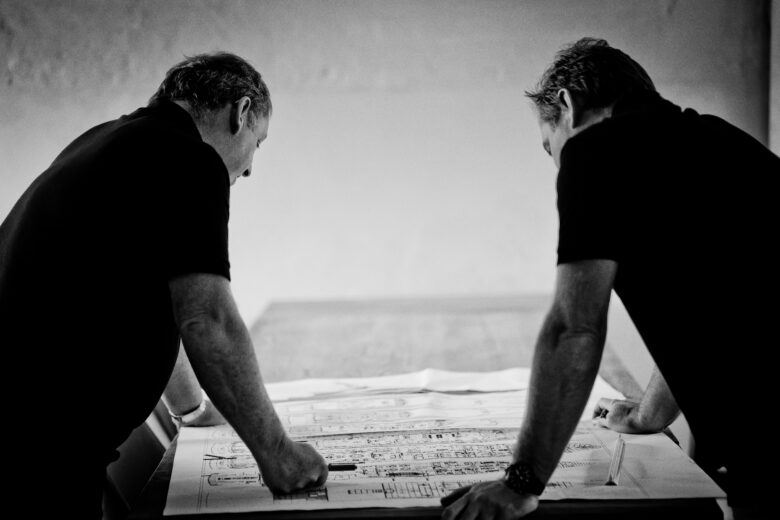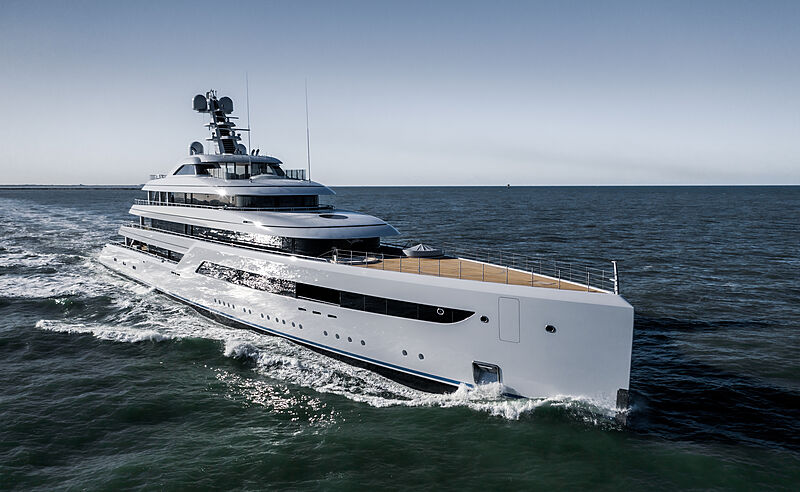Why new-builds need operational design input

Lee Stevenson co-founded new-build consultancy Occam Marine.
A dive at Belize’s famous Blue Hole was to be the crowning moment of the owner’s trip but captain Lee Stevenson had a serious issue.
Both tenders were out of action, one terminally. The owner’s dream vacation was in danger of ending in major disappointment. Not ideal if you’re the captain, and a good way to ruin your 40th birthday.
Sign up for the Superyacht Investor newsletter
The yacht was a 60m new build in its first season, with tenders specified by the broker, and Stevenson was determined to maintain the illusion for the owner. His two engineers worked through the night, stripping parts from one “overly complex” tender to get the other up and running. By morning it was ready to go, and the boss had an “amazing” dive at the Blue Hole to end their trip. “To this day, they still don’t know that happened,” Stevenson tells Superyacht Investor.
‘Encumbered as captains’
Yacht crews routinely have to come up with innovative fixes and out-of-the-box thinking to “keep the party going”, as Stevenson puts it. But the story encapsulates the idea behind Occam Marine, a superyacht new-build consultancy which Stevenson set up with partner Giles Frankal two years ago.
Between them, the pair have 50 years’ experience as superyacht captains, including involvement in construction projects up to 100m, and they have both dealt with countless issues of new-build yachts being delivered with less-than-optimal operational efficiency.
“The main driver for us was that we felt like we were being encumbered as captains by yachts that supposedly had very competent supervisory oversight during the build but the operational design and layouts of the yacht were left wanting somewhat,” he says. “And it was our job as captain and operational crew from day one, from handover, to make these yachts work in front of the owner.
“The last thing an owner wants to do on their brand new €200m yacht is listen to a captain that’s not happy with it.”
READ: Jim Evans on the good, bad and ugly of yacht broking

Stevenson and Frankal work closely on new-build designs.
‘Fundamental things’
It could be the 70 steps from the galley to the saloon, the substandard galley equipment and pantry space, lack of storage for spares, garbage and crew equipment, inadequate nav-comms or poor flow in the general arrangement and on the bridge. Or it could be tenders that can’t launch safely if there is a couple of feet of swell, leaving the owner and guests feeling “captive” on the yacht, adds Stevenson.
“If you had to go and pick up the owner’s daughter who had fallen over the side after too many drinks under way, you’ve got to then really start thinking outside the box,” he says.
As a captain Stevenson worked on two projects 10 years apart with an established northern European yard and was dismayed to find an issue he had flagged originally was still a problem in the second project.
“What frustrated me as a captain was that my time was very much diluted by the fact that I had to deal with fundamental things that shouldn’t have been there,” he says.
‘Blow the owners away’
In philosophy, Occam’s razor is the concept of stripping down problems to their simplest form and that’s the approach Stevenson and Frankal have adopted at Occam Marine when large projects “become even more complex because stakeholders add layers of complexity to what should be quite a simple process”.
“We understand how designers work and that these yachts need to be pretty. They need to look amazing and the owner needs to be able to fulfil the dreams that they’ve had for many years,” says Stevenson.
“But we’ve all been on the receiving end of something that doesn’t work very well. Sometimes there’s a disconnect between what the owners think they’re buying and what they’ve actually got.
”The seven-star service gets bandied around so easily in our industry but we can’t offer that seven-star service unless we’re given the tools to do so and it’s our job to really give the crew those tools to blow the owners away.”

The 88m Feadship Zen is one of Stevenson’s former commands.
‘Priceless’
Stevenson uses an 80m+ new build they took on “a little bit later than they would have liked” as a case study to prove how their early involvement can be cost effective down the line. The initial design meant the crew had to traipse through the guest spa and beach club to get from the tender to other operational areas.
“It sounds very simple but that would be a problem that the yacht would have inherited for its lifetime unless we had got involved and redeveloped a side-hatch boarding arrangement for a tender so that crew could come and go without guests knowing,” he says.
“For some clients, that’s priceless.”
READ: Ian Petts on the whims of the rich
‘Small miracles’
Occam is involved in six projects with an average size of 94m across Germany, the Netherlands and Turkey. Its role varies from full turn-key service and owner representation to technical oversight working with an owner’s rep.
The pipeline so far has been from designers, lawyers and shipyards directly, which is the “acid test”, says Stevenson.
In his LinkedIn profile, Stevenson writes about making “near miracles happen”. He says it’s “tongue-in-cheek” but claims there is plenty of truth to it, stemming from his days as a captain. “I’ve done probably 40-50 weeks of charter over my career and you’re performing small miracles every day in many respects to make things happen,” says Stevenson, who has logged 300,000 miles on a variety of large sailing and motor yachts including the 88m Feadship Zen.
One that sticks out is arranging a wedding with two days’ notice in the Maldives for two charter guests who insisted on getting married. “It took a lot of organisation but that’s the kind of stuff that as a captain you should thrive on,” he says.
‘Promise departments’
Stevenson, Frankal and their team now embrace that problem-solving agility at Occam. “Owners come with ideas, designers come with ideas that operationally are going to be very difficult to implement, whether that’s a helipad that is going to be extremely tight and difficult to actually make work,” he says.
One challenge they currently face is “protracted build schedules”, particularly for older owners for whom “losing one summer is a big deal when they’ve only got 10 left to enjoy the yacht”.
READ: Heesen’s Drontmann bullish despite headwinds
Two of Occam’s projects are on “very short build schedules” of 40 months where the yard wanted 52 months, he says.
“Working out how to build that yacht to the same standard with 12 months less than you normally would have been given has been quite a challenge,” he adds. “The proof’s in the pudding and we haven’t baked the cake yet, but it’s taken a lot of planning and a lot of open discussion with all stakeholders to make sure everyone is happy.”
To help projects stay on track, Occam works closely with owners and family offices to advise on budgeting, decision-making and payment timeframes. “Any delay the yard can pin on an owner’s team, they’re going to be rubbing their hands,” he says. “Clear communication to the owner’s teams is critical to the success of a project.
“There are a lot of ‘promise departments’ within our industry and we’re the guys unfortunately that have to pick up the pieces and try and deliver on those promises.”
Subscribe to our free newsletter
For more opinions from Superyacht Investor, subscribe to our email newsletter.

